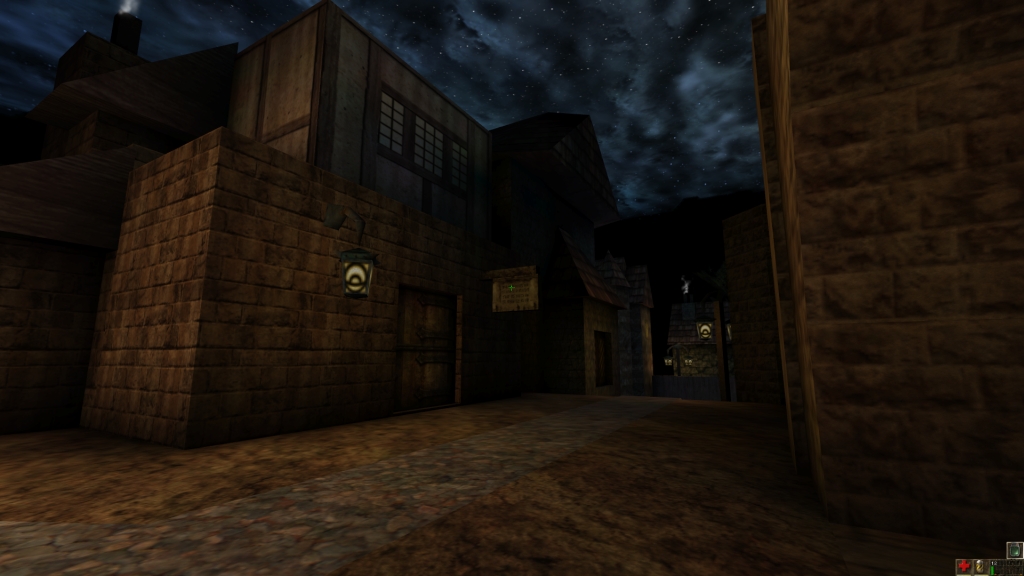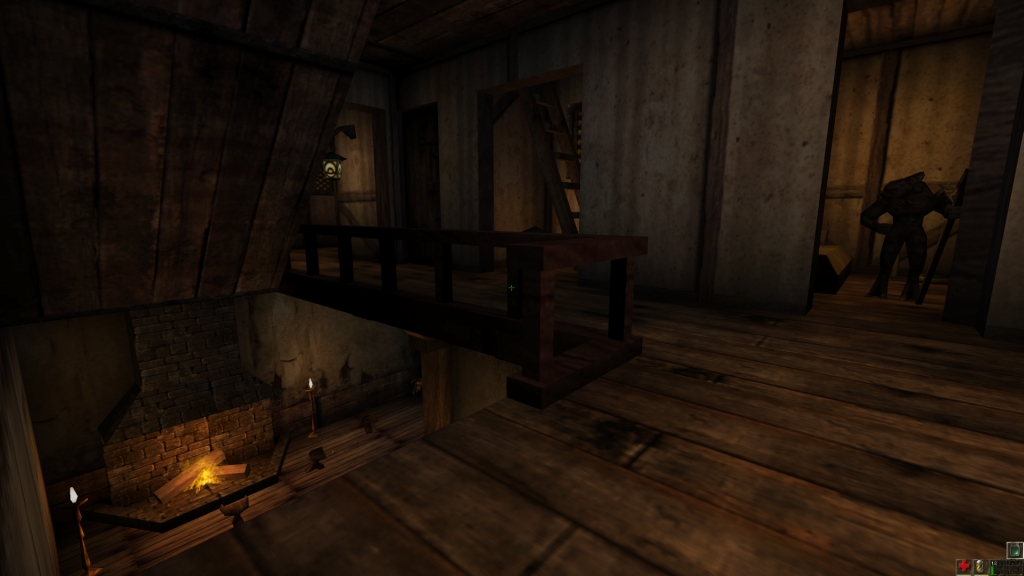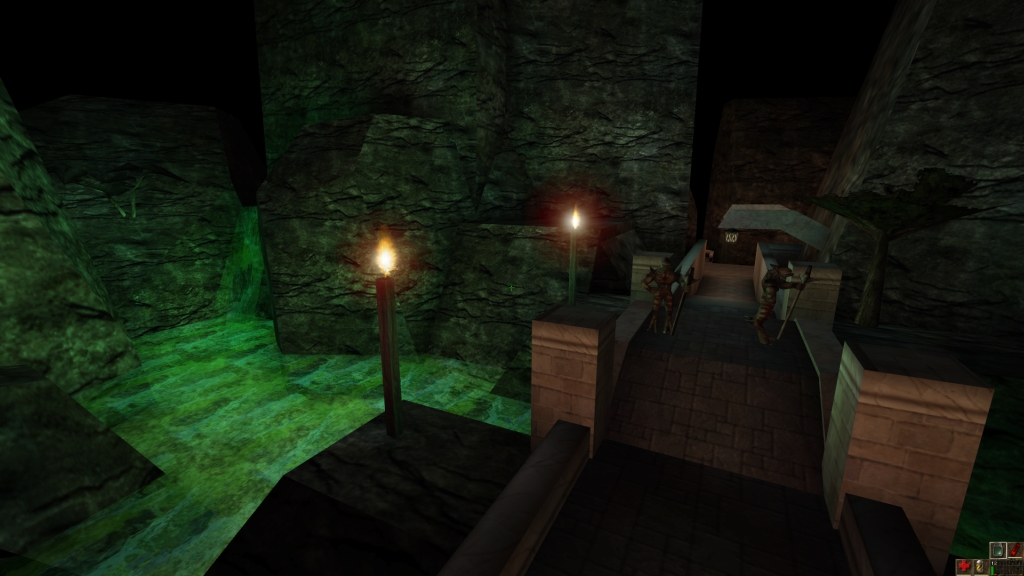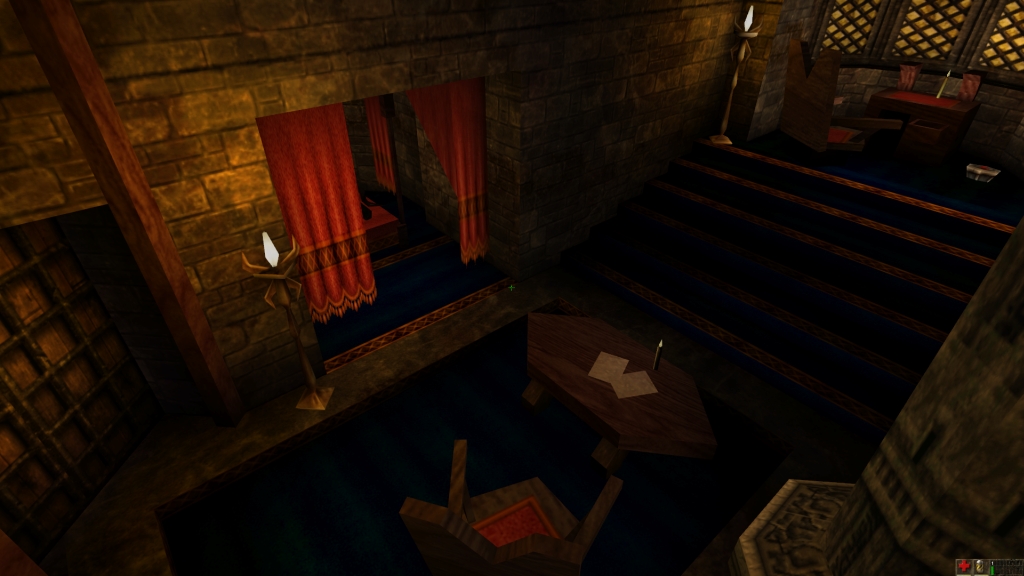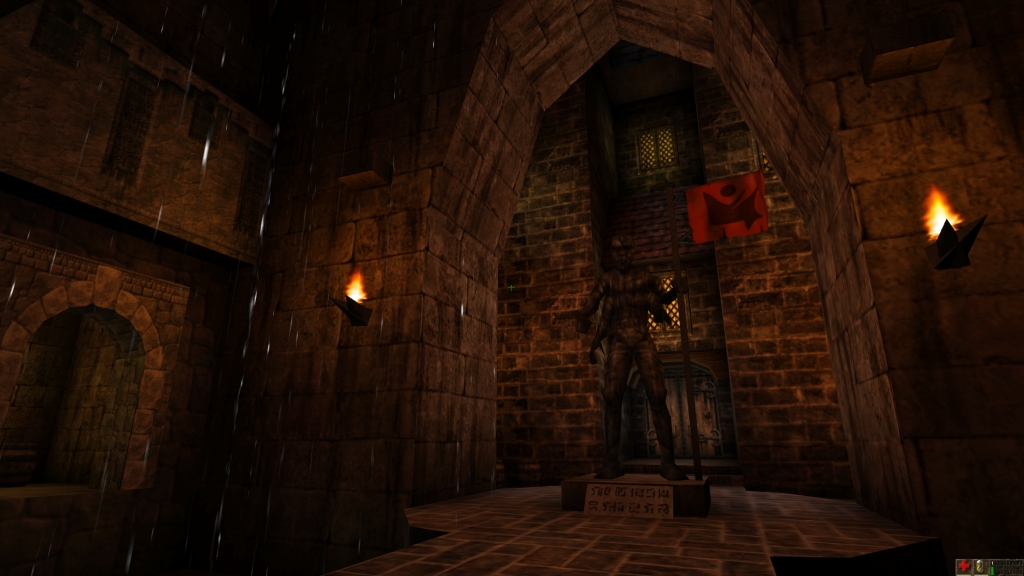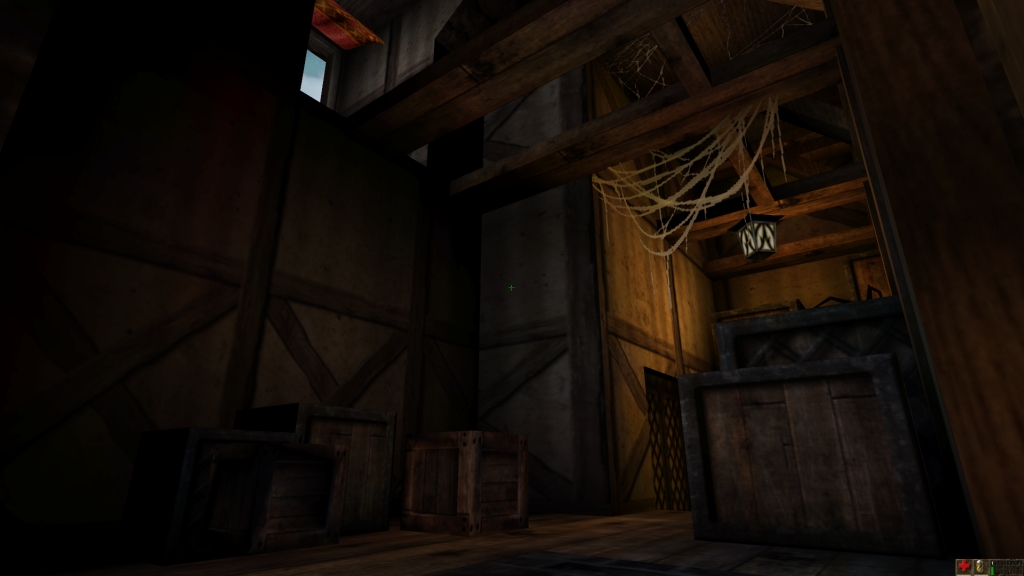Introduction
During an investigation of a mysterious ruin on a desert planet, you absently touch a medallion. After a bright ball of light, you find yourself in a large house confronted by strange four-armed creatures, before collapsing from fatigue.
Review
The Tower of Shrakith’a is an episode consisting of three maps and an epilogue, and begins right after awakening from an unfortunate accident with a mystical medallion. From this point on, the player is free to explore the Nali village and experience what takes place here. And there sure is plenty of depth given to the settings, an atmosphere that Geoffrey had achieved on creating, putting life into the world where players can discover all kinds of details and surprises awaiting them, each with their own little story. The goal of this journey is to return back home, but the only method in achieving this is to reach the tower and defeating the god in which resides there. Shrakith’a. This obviously won’t be a simple task, as the player will need to traverse through a village and reach the portal within a stronghold that takes them to the tower. However, these places are crawling with Krall and the Skaarj.
Each level is kept separate according to their key locations and adjusts the gameplay to suit these themes well. Throughout the Nali Village, players will discover the cruel treatment toward the Nali, in such cases like a Krall vandalising property and bullying the people inside the local tavern. Exploration is a key element throughout these levels, often rewarding players checking out niches that may contain supplies to aid them. This includes paying attention to the Nali whom are willing to hand over hidden stashes they gathered to assist them in their struggle against these unwanted guests. The translator device plays an important part, providing a variety of information that may point players in the right direction. Occasionally our character will have some thoughts about the current situation and share some exposition, or NPCs will reveal things of interest and give clues as to how the player can proceed further into the level. Otherwise, it will do the usual task at translating texts like signs and books. It’s a vital tool and without checking these often, one may find themselves lost.
Enemy placement between areas tend to feel like actual patrol and guard positions rather than simply positioned there to give the player a challenge, yet they still manage to offer good combat from the variety of weapons they use. Such examples include snipers being used at high elevations to defend the stronghold, or top ranking Skaarj having tougher weapons like the Eightball or Razorjack and tend to be found in more richer locations, while the Krall can usually be found down in the lower levels to keep tabs on the Nali and preventing intruders from entering places they shouldn’t be. This aspect does add another layer of depth to the setting and feels as one should expect the hiearchy to work. Ammo distribution is almost done in a similar manner except scattered about more often. While the player is given a variety of weapons during their course, ammo isn’t exactly handed out to them. Caches tend to bundle a few different types, usually having different weapons in mind each time, forcing a play style that switches between firearms and think wisely about which ones to use, rather than sticking to their favourites.
The pacing will eventually mellow down upon reaching the Guardian’s tower, since none of the usual foes you fight up until this point can be found here. In their place however are two trials to test the player’s strengths in mind and body, before they can have a final showdown with Shrakith’a itself. This does create a sense that only the chosen ones can enter this tower and all outsiders are not welcome. Unfortunately, something felt missing here, such as the option to explore niches and discover little details concerning past events and other challengers. There is a problem present however, which can easily be avoided but annoying otherwise. It is possible to go straight through the portal at the end of the mind trial and forget to pick up the Eye, with no way back to grab it afterwards. Jumping sections were probably the more frustrating aspects in this level though. This issue actually started out within the Nali village, where the player must cross over rooftops to avoid the deadly fog below and reach the outskirts. The first jump is troublesome and the trial and error nature of it felt wrong, considering I had died more than ever succeeded. The jumps beyond this point aren’t as difficult to manage, with no other jumping segments after the fog section until the third level. Jumping here becomes a more prominent mechanic to solve certain areas, yet it can get tedious for those who are not exactly adept to Unreal’s movement. Similar to problems I had with Lo sota Olt for Quake 3.
Design is definitely up there with the rest of the map, where themes are clearly defined through the style of architecture, texturing and ambience of each location. The Nali village feels like a tightly knit community complete with the essentials like housing, a tavern and other buildings. There is a variety of shapes and slight changes in elevation to ensure the place remains refreshing to explore. There are many smaller details as mentioned earlier in the review that adds much depth to the setting, one example being the Nali reading his child a bedtime story that can be seen through a window. As the player travels further away from where they awoke, the closer the village begins to blend in with the surrounding nature. The path here then leads through the hills toward a large stronghold overlooking the area. One nice touch here is the visible monument of a hand grasping out for a green orb in the distance, tempting one to its location.
Later levels make a stark contrast in style which sets them apart. The stronghold becomes more richly decorated and colourful in places, containing many rooms and hallways with high ceilings. The Captain’s room especially looks quite nice and fits his status well. Even the drainage area near the start has a nice ambience with its greenish lighting. There is plenty of visual variety and this can be seen when comparing the earlier segments to, say, the separate barracks building. Geoffrey however manages to convey the tower of Shrakith’a to feel mystical through its general presentation, especially during the trials, like the stone pedestals popping up from the ground to reveal what the next task is. But I couldn’t help but notice the construction did feel rather blocky at times and not as well refined like in previous levels.
Conclusion
These levels are packed with an atmosphere that creates a sense of life and that events unfold in the world. There is plenty of variety where each level offers a separate location as its key theme and focuses its gameplay around that through and interesting style of enemy and ammo placement. Exploration is also rewarded with all kinds of little surprises and additional supplies to aid players.
